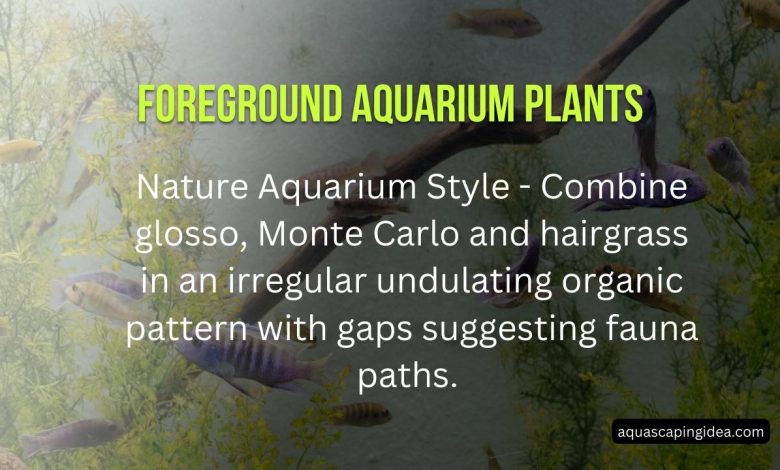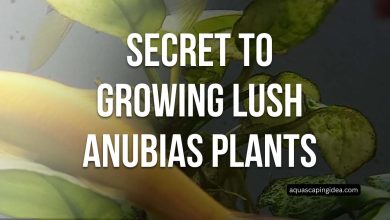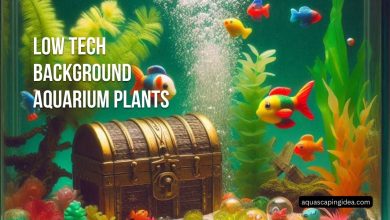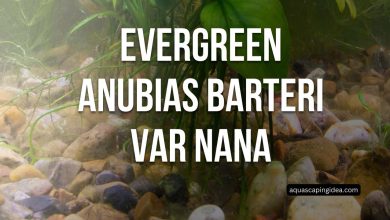What Are Foreground Aquarium Plants?

Beyond housing fauna, aquariums present living canvases for realizing artistic visions. When planning aquatic layouts, the foreground merits special design consideration. Low carpeting plants anchor bottom levels, framing centered elements while concealing equipment and substrate. Explores go-to aquatic carpeting plants for fashioning seamless lush green lawns or vivid forgrond meadows.
Defining the Foreground Dimension
In aquascaping composition, the foreground constitutes the lowest visible level – a carpet of low-growing plants masking substrate and hardware. Typically under 4 inches tall, forgound plants enhance scale and perspective drawing the eye inward.
Carpeting foliage fronts aquarium contents while smoothing transitions from equipment behind the scenes. This crucial dimension also affords functional benefits:
- Conceals pipes, heaters, intakes along the bottom
- Prevents uneaten food and debris accumulation
- Offers security, shelter and exploration for shy species
- Stabilizes sloping transitions to mid and background stems
Vibrant forgound carpets infuse aquariums with lushly welcoming curb appeal. Like a golf course green, aquatic lawns present welcoming visual punctuation while hiding messy necessities underwater.
Considerations For Choosing Plants
Myriad freshwater plant varieties stay petite and propagate spreading crawler stems perfect for carpeting. But how decide which forgound options work best for your tank dimensions and style goals? Keep these key considerations in mind when selecting:
Maximum Height
Varieties reaching over 4 inches tall suit better for midground use rather than true forgound low carpeting. Look for species with height ceilings under 4 inches.
Growth Rate
Active moderate growers quickly generate a filled-in look without outrunning trimmings. Avoid slow growers prone to patchiness and fast varieties demanding high maintenance.
Light Requirements
Match forgound plants to existing tank light intensity for best results rather than expecting unsuitable varieties to adapt. Moderate light lovers work well under most setups.
Maintenance Needs
Seek out undemanding hardy varieties over high maintenance divas requiring perfect conditions. Resilient choices like mosses rebound from disruptions and uneven trimming forgivingly.
Propagation Method
Runners, stolons and clippings that root easily facilitate propagating groundcover curtains. Seeding carpets from cuttings saves time and money over buying starter pots.
Recommended Forgound Carpeting Plants
Ready to explore suitable options for crafting a flawless forgound carpet? Here are some top recommendations:
Microsword (Lilaeopsis brasiliensis)
- Dense spreading grassy mats
- Propagates quickly from runners
- Lush emerald green color
- Max height 2 inches
Dwarf Baby Tears (Hemianthus callitrichoides )
- Tiny leaves form velvety green carpet
- Grows thick from runners and cuttings
- Reaches just 2 inches tall
Pearlweed (Micranthemum micranthemoides)
- Round petite leaves on trailing stems
- Rapidly generates dense mats
- Under 3 inches maximal height
Marsilea Crenata
- Clover shaped 4 leaf foliage
- Spreads by runners like strawberry
- Easy undemanding 2 inch height
Glossostigma Elatoides
- Miniature tongue shaped leaves
- propagate from cut runners and clippings
- Brilliant emerald green color
Java Moss (Taxiphyllum barbieri)
- Feathery light green fronds
- Attaches easily to surfaces
- Diminutive size suits forgound
- Doubles as floater until anchored
Susswassertang
- Thin grass like strands up to 4 inches
- Adaptable lowlight freshwater algae
- Soft texture contrasts other plants
Monte Carlo (Micranthemum tweediei)
- Round serrated tiny leaves
- Dense spreading foliage
- Vibrant green carpets low
Designing Your Forgound Layout After selecting suitably sized carpeting plant species, turn imagination toward the forgound’s layout potential. Do you envision orderly golf course style formations? Or perhaps rolling meadow with gaps suggesting animal trails?
Consider intermixing varied leaf textures playing bigger species off tiny delicates for depth. Integrate moss coated stone outcroppings, small leafed anubias sprouting from weathered spiderwood adding topographic interest across the forgound plane. Spilling pennywort down a sloping bank conveys water’s edge.
Popular Aquascape Carpet Design
Here are some popular aquascape carpet design concepts to consider:
Nature Aquarium Style – Combine glosso, Monte Carlo and hairgrass in an irregular undulating organic pattern with gaps suggesting fauna paths. Allow sections to grow taller between uniform lawn beds mimicking wild self-seeding.
Dutch Aquascape Inspiration – Alternating plots of painfully manicured baby tears and Java moss rectangles encircling centered focal stones and trimmed stem towers impose orderly human intention keeping nature contained.
Iwagumi Hardscape Centering – Mass elegant curved seams of pearlweed softening weathered seiryu stone slopes that descend from mountainous rock outcroppings towering just above the substrata base.
Pro Tip: Initially plant only a quarter of the area you want ultimately covered then fill in gaps with propagated trimmings once adjacent growth establishes for flawless seamless integration rather than patchwork carpets.
Cultivating Lush Carpeting Growth
Once selecting forgound plant varieties suited to existing tank conditions and scaping an initial layout, adhere to the following care essentials:
Iron Rich Substrate Laterite clay boosts red hues while supporting healthy extensive root networks and lush foliage.
Root Fert Spikes Supplement root column feeders generously starting beds with capsule spikes or tabs placed 3-5 inches apart topped off with layers of substrate.
2x Daily Light Cycle Splitting the photoperiod into two separate durations allows a siesta period minimizing algae while benefiting nutrient uptake promoting carpet growth.
Begin CO2 Injection Supplemental CO2 accelerates carpeting considerably for impatient aquascapers. Just take care easing levels up gradually monitoring fauna reactions.
Use Spring Scissors Invest in curved blade trimming sheers allowing precision cutting of carpet edges flush to substrate barrier. Avoid damaging sensitive root networks.
Common Forgound Pitfalls & Fixes
While carpeting plants add fabulous curb appeal, new aquascapers often encounter avoidable issues. Sidestep complications by dodging these missteps:
Leggy Growth From Insufficient Lighting – Increase intensity or duration gradually ensuring forgiveness photoperiods prevent algae blooms.
Sparse Coverage From Under Planting – Be patient allowing propagated cuttings to spread and fill or start with tissue cultures yielding faster flawless results.
Pale Colors Signaling Low Nutrients – Test then dose water column NPK while adding root spike fertilizers to substrate releasing minerals in the root zone over months.
Algae Smothering Emerging Shoots – Remove afflicted sections manually while implementing steps to eliminate underlying causes related to light intensity, duration or excess nutrients fueling blooms.
Melted Transplants From Disrupted Roots – Replant delicate carpeting species gently by simply topping the substrate barrier without disturbing established root networks.
Cultivate Endlessly Enchanting Forgound Foliage
Mask mundane equipment while smoothing transitions up the aquascape levels. But don’t expect instant gratification – biologically balancing aquarium ecosystems takes time. By starting lean and building gradually, soon hypnotizing sheets of pearling baby tears or undulating hairgrass plains give way to layered stems until soaring background canopies fade into imaginary horizons unseen above the water’s surface. Let creativity run wild imagining what fabulously lush living rug you’ll unfurl next across your aquatic gallery floors!
FAQs
What are some good beginner foreground aquarium plants?
Great forgiving forgound varieties for aquascaping beginners include marimo moss balls, Java moss, Anubias Nana, Crypt Parva, Dwarf Baby Tears, and Microsword. Their low light, undemanding nature and propagation by clippings ease successful cultivation.
How thick should aquarium forgound substrate be?
An ideal forgound base for carpeting plants averages 2-3 inches deep. This prevents compaction and anaerobic gas pockets while allowing healthy expansive root network formation. Lean mineral rich substrates work best.
Why is my forgound carpet turning brown or yellow?
Fading green carpeting foliage often indicates insufficient macronutrients, especially nitrogen, iron and potassium. Dose the water column with comprehensive supplement while inserting new root fert spikes around affected areas to restore micronutrients.
What causes foreground aquarium plants to die?
Sudden carpeting plant melting or mass dying typically stem from drastic CO2 or lighting changes shocking the established balance. Fluctuations in pH, temperature and nutrients can also trigger declines. Make adjustments slowly allowing plants to adapt.
How do I propagate forgound carpet plants?
Snip sections of established runners trailing beyond the main carpet mass. Replant these cuttings an inch deep in bare spots to fill gaps. Prune leggy sections above leaf nodules for denser rebounds. Pearlweed, Microsword, hairgrass, Monte Carlo all propagate readily this way.




